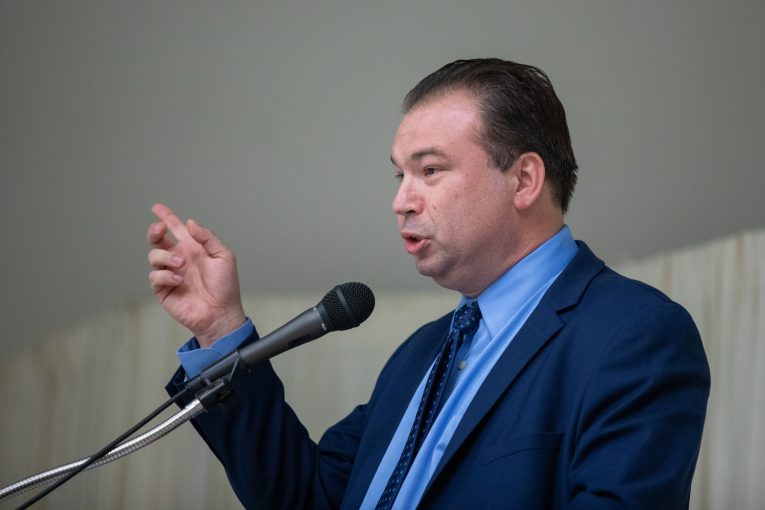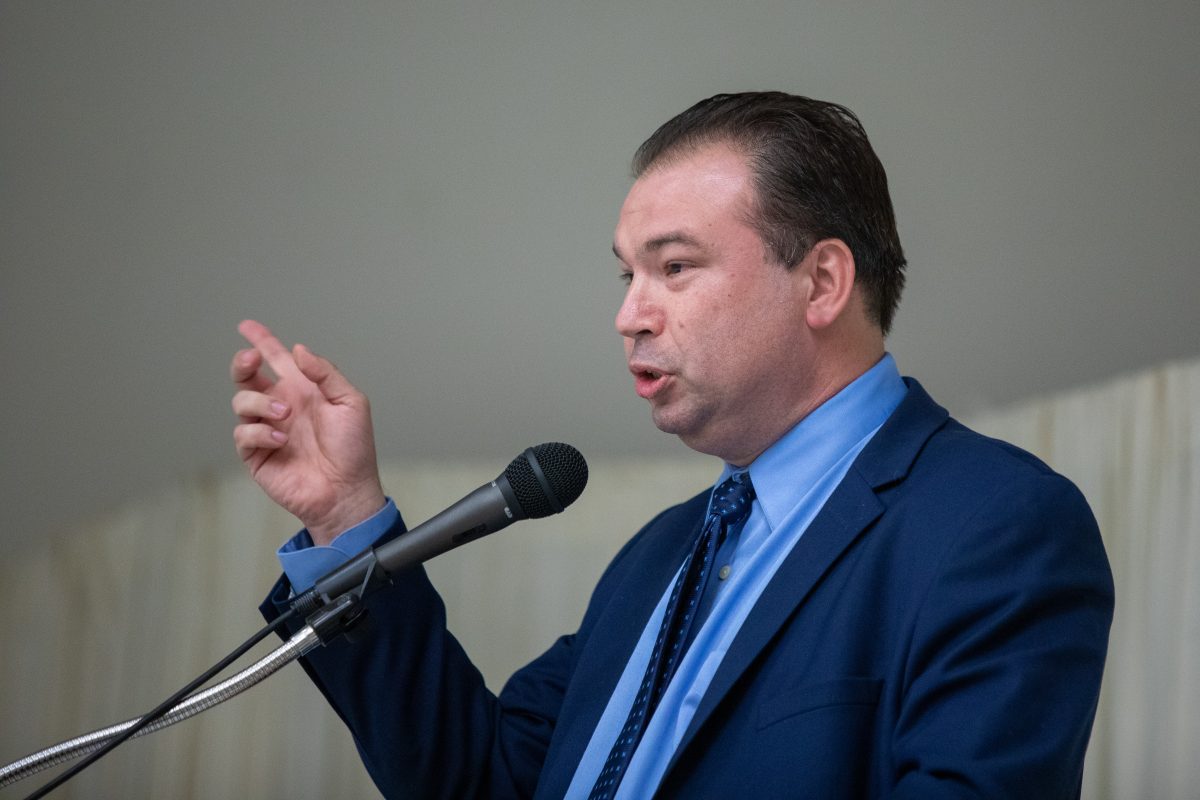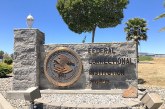

By Jeffrey Deskovic
“Looking back” will feature reprints of articles that Jeff previously wrote while a columnist at The Westchester Guardian, which encompass topics that are applicable here in CA as well as across the country and not simply applicable to NY.
I began the “Wrongful Convictions Just Keep Coming Out” series back on May 1, 2008, in order to combat the commonly held belief that wrongful convictions are rare. Given that there are scant resources to provide legal representation and investigation that is needed to clear the wrongfully convicted in non-DNA cases, and that DNA evidence is only available in 10 to 12% of all serious felony cases, the actual frequency is unknowable. But it is clear, given the frequency with which people have been being cleared, both through DNA and other means, that it is much more frequent than what the average person believes. This series is intended to illustrate that point, as well as the need for legislative changes.
Dewey Bozella: 26 Years
I thought it fitting that the first case covered be that of Dewey Bozella, who served 26 years, since his wrongful conviction for the brutal murder of 92-year-old Emma Crapser—overturned Oct. 14, 2009, happened in Dutchess County, New York, just north of  Westchester. According to the Daily News, “Bozella was arrested for the crime in 1977 but was released 4 months later, due to a lack of evidence. From that point forward, the police harassed him until they ultimately rearrested him for the crime in 1983.”
Westchester. According to the Daily News, “Bozella was arrested for the crime in 1977 but was released 4 months later, due to a lack of evidence. From that point forward, the police harassed him until they ultimately rearrested him for the crime in 1983.”
Bozella was implicated by two other men, who were described as career criminals. They changed their stories during the history of the case, admitted they were drugged up on the day of the murder and testified for the prosecution after receiving favorable deals in exchange for their testimony. The only forensic evidence tying anyone to the crime was the fingerprint of a man named Donald Wise, which was found on the victim’s bathroom window.
At the time of Bozella’s trial, Wise was in prison, having been convicted of murdering an elderly woman just months after Mrs. Crapser’s murder. There were similarities between the two murders, which happened in the same neighborhood. Despite the skimpy case against him, Bozella was convicted in 1983 and again in 1990 after the initial verdict was overturned because Blacks had been unlawfully struck from the jury. Bozella was denied parole 4 times, based upon his failure to take responsibility for the crime and express remorse.
A retired Poughkeepsie police lieutenant had kept the case file, which contained statements from the victim’s neighbors that contradicted the two key witnesses. His attorneys also obtained a tape recording of someone who implicated Donald Wise in the murder. “None of that evidence had been turned over to Bozella’s defense attorneys.”
Commentary
In this case, we see the familiar theme of incentivized witnessing, which is when a witness receives a reward in exchange for providing testimony, leading to a wrongful conviction. That has been the cause of wrongful convictions in 15% of the DNA-proven wrongful convictions, and in many of the non-DNA exonerations.
As I have advocated before, I believe that the practice of giving witnesses a reward in exchange for testimony should be ended, and that instead they should simply come forward on a moral basis. The reason is that when desperate offenders have been caught red-handed and they have no truthful information to trade on, they often resort to falsely implicating an innocent person.
As far as I am concerned, whoever withheld this evidence committed a crime and should be sent to prison. We need legislation that will allow for criminalization of this kind of conduct, which happens all too frequently, for it amounts to a legal kidnapping under color of law. How could the lieutenant simply sit there and remain silent?
Legislation is needed that will prevent the Parole Board from denying parole to prisoners based upon their maintaining their innocence, which of course prevents them from expressing remorse and taking responsibility. Such an approach on the Board’s part does not take into account the reality of wrongful convictions, and results in the lengthening of an already unjust prison sentence. Bozella spent an additional six years in prison as a result of the Parole Board’s unreasonable unofficial policy.
This case illustrates the need for more non-DNA innocence projects. There are scant resources available for those whose cases have no DNA to test. As crazy as it is to say, in that respect, Bozella got lucky in that he obtained legal representation. In addition, more large law firms that have the financial means should consider opening pro-bono sections in their firm or, at the very least, taking on cases as often as feasible
Donald Gates: 28 Years
Donald Gates was released on Dec. 15, 2009, after serving 28 years in prison for rape and murder in Arizona, before being cleared by DNA. According to MYFOX.com, the evidence against Gates consisted of a paid police informant, and a comparison of hairs found on the victim with those taken from Gates, which the FBI hair analyst Michael P. Malone testified, according to the Associated Press, were “microscopically indistinguishable.” In addition, a woman testified against him saying that 19 days earlier he had tried to steal her purse.
According to MYFOX.com, “In 1988, Donald Gates wrote a letter to the judge asking for help. ‘Your honor,’ he wrote, ‘The woman was found to have Type O sperm cells in her body. The FBI had clearly stated that I am Type A Positive. Now my point is, your honor, that today there are DNA labs that can prove whether a man had anything to do with a rape case.’” The letter did not help Gates.
“In July 2008, DC Police found six slides connected to the case at the office of the chief medical examiner.”
On December 8, the results came in, and not only does the DNA not match Gates, but it also has matched another prisoner who has not as yet been identified.
Other things have come to light. According to MYFOX.com , “Malone’s work came under scrutiny after the inspector general found numerous faults with his work. According to defense attorneys, ‘Michael P. Malone has been exposed as a liar who testified falsely, who fabricated results, who testified outside of his expertise, and whose laboratory notes did not support the conclusion he offered in court.’”
In addition, as the Associated Press reported, “Microscopic hair analysis has been discredited. A report by the National Research Council of the National Academy of Sciences that said there was ‘no scientific support’ for using hair comparisons for identification. The judge who overturned the verdict has ordered the U S Attorney to review all of the cases in which Malone testified’”.
Although Gates has been released, he has not yet been formally cleared. But there is agreement by all parties that that is a formality, which will be done shortly. Prosecutors are waiting for the results of a third DNA test to confirm the previous results.
Commentary
This case illustrates the need for federal legislation to create a National Institute of Forensic Sciences, as I wrote about in a previous issue of The Guardian, and for state legislation mandating review of all cases that involved any of the junk sciences being offered as proof. We also need federal legislation which would tie the receiving of federal monies to the state’s willingness to pass such measures.
I salute the judge for ordering the US Attorney to review all of the cases in which Malone testified. Given that one “expert” can have potentially testified in many cases, this case raises the question of how many innocent people have been wrongfully convicted, based upon people operating similar to Malone. Likewise, this case should also serve as a warning to other experts, who do practice legitimate sciences, to testify truthfully, not to exaggerate, and to stay within the bounds of what their expertise is, lest they help bring about a wrongful conviction.
This case shows that we need legislation to prevent incentivized witnessing and how crucial it is for access to DNA testing. That means passing laws, strengthening existing ones, and giving the right to DNA database comparison.
I hope that judges around the country take note of the short shrift that the judge that Gates sent his letter to requesting DNA testing. Gates could have been saved 11 years had the judge done the right thing and looked further into the case, and granted DNA testing. Judges need to be more aware of wrongful convictions, and be on guard to remedy and prevent them at every turn.
James Bain: 36 Years
At 19 years of age, Bain was wrongfully convicted in Florida of raping a 9-year-old boy. According to The St. Petersburg Times, “A nine-year-old boy was taken through an open window, and raped. The boy staggered home dazed, and his underwear was now wet with semen. At night the child described the rapist as having ‘Bushy sideburns … 17 or 18 … he said his name was Jim.’ The boy’s uncle, an assistant principal where Bain attended, said the description pointed to Jimmy Bain, who had bushy sideburns. The boy picked Bain out of a photo array. In a deposition, the boy said that the police asked him, ‘Can I pick out Jimmie Bain?’ Bain had an alibi: he was watching television with his sister. Nonetheless, he was convicted. In 2001, Bain twice requested DNA testing of the boy’s underwear. The requests were rejected. He asked again in 2003 and 2006 and was denied both times. In July of this year, Bain asked again, and got it. The results excluded him. As of this writing, he had still not been released; prosecutors want a confirmatory test performed.”
Commentary
This case illustrates the need for legislation to improve identification procedures. Police should not give information or clues about who should be picked. The police officer telling the boy to pick out Mr. Bain fatally tainted the identification.
This case highlights the need for strong legislation mandating the right to DNA testing. It is sickening to think that Bain first began requesting testing back in 2001; eight years in prison could have been saved. This case is also, like the one mentioned above, a reminder for judges to be on the lookout to correct wrongful convictions. In addition, I simply don’t see how a judge, acting in good conscience, could deny DNA testing, much less do so repeatedly. What were they thinking about?
Claude Simmons, Jr., and Christopher Scott: 12 Years
Simmons and Scott served 12 years in Dallas, Texas, for a robbery and murder, prior to being cleared. According to The Daily Texan, they were convicted based upon identification evidence, made during a “show up”. According to The Daily Texan, “The exonerations are the first made in a Dallas capital murder case not based on DNA evidence and the first achieved by the UT Austin Actual Innocence Clinic, started in 2003, and the UT Arlington Innocence Network, started in 2005. They obtained a confession from an alternative suspect who was in prison on a aggravated robbery conviction, which was very detailed.
“The Dallas Police Department Cold Case Unit, in collaboration with Dallas District Attorney Craig Watkins’ Conviction Integrity Unit, retraced the investigation by the joint projects. Alonzo Hardy, who confessed, was arrested for the crime, along with Don Michael Anderson.”
According to the Dallas Morning News, “Judge Warder, the trial judge, would not allow Anderson’s girlfriend to testify as to a confession made by him, nor two other defense witnesses. That ruling was upheld on appeal.”
According to the Dallas Observer, Dallas District Attorney Craig Watkins said that these two exonerations could be “the biggest yet.”
Commentary
According to The Daily Texan, Watkins said that “today’s non-DNA exonerations may inspire other prosecutors’ offices and police departments around the country to reopen questionable old convictions for investigation.” He said, “I expect this case will get a lot of attention, and I expect you’ll see other police departments get involved in cases like this. We’re going to lead the way in how to dispense justice.” Michelle Moore, of the Conviction Integrity Unit, says they will not be the last: “This is the tip of the iceberg here. This is where we’re going to be in the future.”
I hope that this sets a trend for prosecutors in setting up Conviction Integrity Units, and for police departments not to be afraid to reinvestigate old cases, especially in non-DNA cases. In fact, I think that they should be legislated into existence.
Watkins is, to me, a prosecutors’ prosecutor. He is concerned about correcting injustices and convicting the guilty. This case illustrates the need for a ban of “show ups,” because they are too suggestive. We desperately need a real Conviction Integrity Unit here in Westchester County, staffed by people who are identified to the public.
Although District Attorney DiFiore claims to have such a program, the truth is that there is not one; no named employees, no old cases that are pro-actively reviewed. In fact, in the last year and a half, when meritorious appeals were led that involved prosecutorial misconduct and innocence, the District Attorney unsuccessfully fought to preserve those convictions.
Michael Marshall: 2 Years
On Dec. 15, 2009, as this article was being prepared, Marshall was cleared after serving 25 months in Georgia, for theft of a truck. According to The Georgia Innocence Project, which cleared him, “Marshall was homeless at the time of the crime. He was misidentified ten days later during a “show-up.” A police officer who saw Marshall sleeping in an apartment building hallway thought that he resembled a composite drawing of the perpetrator. DNA testing of a t-shirt, cell phone, and cell phone case, which were recovered after police lost the suspect following a high-speed chase in the stolen truck showed that not only did the DNA not match Marshall, but it matched another person whose DNA was in the DNA database. The police did not bother to do a DNA test in 2007, nor did they even bother to try to determine the owner of the cell phone.”
Commentary
This case illustrates that police should continue to investigate even after an identification has been made, to make sure that all of the evidence matches up, especially considering that misidentification is the leading cause of wrongful convictions. Their actions were so sloppy and negligent that it is beyond words. In addition, Marshall’s attorney was obviously inadequate for not requesting the DNA testing or seeking to identify the owner of the cell phone. We need an Independent Public Defense Commission, which would improve the quality of public defenders, provide oversight and weed out ineffective attorneys.
This case also shows that the common thought that wrongful convictions will not occur now that we are in a more advanced era, due to DNA, are incorrect. They can and do still happen, especially with many reforms that are needed to improve the accuracy of the system still not enacted across the country.
“Jeffrey Deskovic, Esq, MA, is an internationally recognized wrongful conviction expert and founder of The Jeffrey Deskovic Foundation for Justice, which has freed 9 wrongfully convicted people and helped pass 3 laws aimed at preventing wrongful conviction. Jeff is an advisory board member of It Could Happen To You, which has chapters in CA, NY, and PA. He serves on the Global Advisory Council for Restorative Justice International, and is a sometimes co-host and co-producer of the show, “360 Degrees of Success.” Jeff was exonerated after 16 years in prison-from age 17-32- before DNA exonerated him and identified the actual perpetrator. A short documentary about his life is entitled “Conviction“, and episode 1 of his story in Virtual Reality is called, “Once Upon A Time In Peekskill“. Jeff has a Masters Degree from the John Jay College of Criminal Justice, with his thesis written on wrongful conviction causes and reforms needed to address them, and a law degree from the Elisabeth Haub School of Law at Pace University. Jeff is now a practicing attorney.





